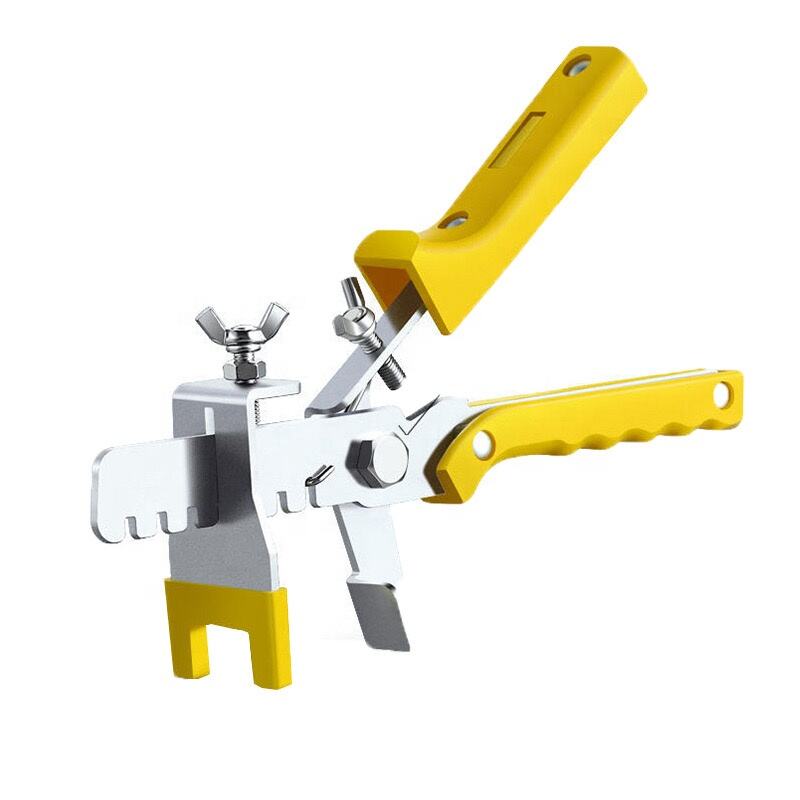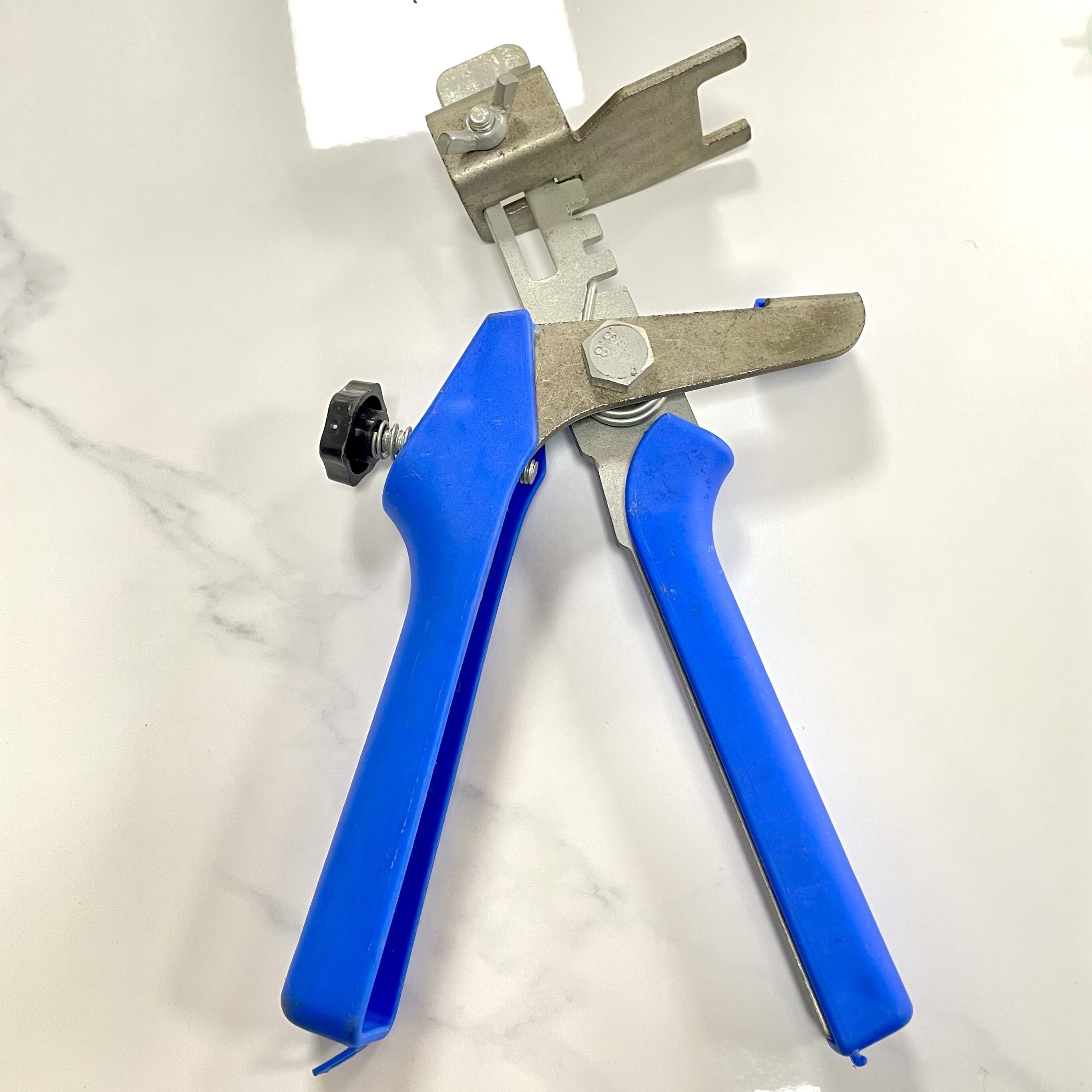Padroneggiare l'Arte dell'Installazione Professionale di Piastrelle
Il percorso per ottenere posizioni di piastrelle perfettamente livellate inizia con la comprensione dell'uso corretto delle pinze per il livellamento delle piastrelle . Questi strumenti essenziali hanno rivoluzionato il settore della piastrellatura, rendendo possibile sia per professionisti che per appassionati fai-da-te ottenere risultati impeccabili. Tuttavia, anche con questi strumenti innovativi a disposizione, diversi errori comuni possono compromettere la qualità del posizionamento delle piastrelle. Esploriamo queste difficoltà e scopriamo come superarle per ottenere risultati eccellenti.
Comprensione dei sistemi di livellamento per piastrelle
Componenti e loro funzioni
Prima di addentrarci negli errori più frequenti, è fondamentale comprendere l'intero sistema di livellamento delle piastrelle. Il sistema è composto da diversi elementi chiave che lavorano insieme: le clip o distanziatori, le cunei e le pinze per il livellamento delle piastrelle. Le clip creano un'intercapedine costante tra le piastrelle mantenendo l'allineamento in altezza, i cunei bloccano il sistema in posizione, mentre le pinze applicano la pressione precisa necessaria per un'installazione ottimale.
La sinergia tra questi componenti è ciò che rende il sistema così efficace. Le pinze per la livellazione delle piastrelle sono progettate specificamente per funzionare con le relative clip e cunei, garantendo la giusta tensione ed evitando il dislivello tra le piastrelle. Comprendere come questi elementi lavorano insieme è fondamentale per evitare errori di installazione.
Tipi di sistemi di livellazione
Diversi produttori offrono stili diversi di sistemi di livellazione per piastrelle, ognuno con caratteristiche e vantaggi unici. Alcuni sistemi utilizzano cappucci riutilizzabili con basi monouso, mentre altri impiegano clip usa e getta. Le pinze per la livellazione devono essere compatibili con il sistema scelto per garantire il corretto funzionamento e prevenire danni sia agli strumenti che alle piastrelle.
Ogni sistema ha requisiti specifici relativi alle impostazioni della pressione delle pinze e alle tecniche di applicazione. Prendere familiarità con le specifiche del proprio sistema aiuta a prevenire molti errori comuni di installazione e garantisce risultati ottimali.
Errori critici nell'applicazione della pressione
Forza Eccessiva e le Sue Conseguenze
Uno degli errori più frequenti nell'uso delle pinze per livellare piastrelle è applicare troppa pressione. Una forza eccessiva può provocare crepe nelle piastrelle, danneggiarne i bordi o comprimere in modo irregolare il materiale di posa. La chiave è applicare una pressione costante e moderata, che permetta al sistema di funzionare come previsto senza rischiare di danneggiare le piastrelle.
Gli installatori professionisti consigliano di iniziare con impostazioni di pressione più basse e aumentarle gradualmente se necessario. Questo approccio aiuta a sviluppare la sensibilità necessaria per determinare la quantità corretta di forza richiesta per diversi tipi e dimensioni di piastrelle. Ricorda che piastrelle di formato più grande potrebbero richiedere impostazioni di pressione diverse rispetto a quelle più piccole.
Problemi Dovuti a Pressione Insufficiente
Al contrario, applicare una pressione insufficiente con le pinze per il livellamento delle piastrelle può portare a un livellamento inadeguato e a problemi di disallineamento (lippage). Quando la pressione è troppo leggera, le clip non si innestano completamente, causando superfici piastrellate irregolari. Questo errore spesso diventa evidente solo dopo che il materiale di fissaggio si è indurito, richiedendo correzioni costose e lunghe da eseguire.
Per evitare questo problema, assicurarsi che le pinze siano correttamente calibrate e che le clip di livellamento si innestino completamente. Il suono e la sensazione delle pinze durante l'uso possono spesso indicare se si sta applicando una pressione sufficiente.

Considerazioni su Tempi e Posizionamento
Posizionamento Strategico delle Clip
La posizione delle clip di livellamento riveste un ruolo fondamentale per ottenere risultati ottimali. Molti installatori commettono l'errore di posizionare le clip troppo distanti tra loro o in modo non uniforme. Un posizionamento corretto prevede clip in tutti gli angoli delle piastrelle e un supporto aggiuntivo lungo i bordi delle piastrelle di formato più grande.
Creare un approccio sistematico per la posizione delle clip aiuta a garantire una copertura e un supporto uniformi. Si consiglia di pianificare le posizioni delle clip prima di iniziare l'installazione, specialmente per modelli complessi o quando si lavora con piastrelle di grande formato. Questa pianificazione può prevenire problemi di sfalsamento e assicurare un supporto uniforme lungo tutta l'installazione.
Gestione del Tempo di Lavoro
Il tempo è fondamentale quando si utilizzano pinze per livellare le piastrelle. Lavorare troppo lentamente può far iniziare la presa dei materiali di fissaggio prima che il livellamento sia completato. Al contrario, affrettarsi nell'installazione senza lasciare un tempo adeguato per il posizionamento e la regolazione corretta delle clip può causare problemi di allineamento.
Gli installatori esperti raccomandano di lavorare per sezioni gestibili e mantenere un ritmo costante che permetta un'adeguata attenzione ai dettagli. Questo approccio contribuisce a ottenere risultati uniformi evitando che il materiale di fissaggio indurisca prematuramente.
Manutenzione di Materiali e Attrezzi
Procedure di Pulizia e Cura
Trascurare la pulizia regolare delle pinze per livellare piastrelle può portare a una riduzione dell'efficacia e a possibili danni alle piastrelle. Il materiale di fissaggio che si accumula sulle pinze può influire sull'applicazione della pressione e sulle prestazioni complessive. L'adozione di una procedura di pulizia periodica aiuta a mantenere la funzionalità dello strumento e ne prolunga la durata.
La manutenzione regolare dovrebbe includere la pulizia delle pinze dopo ogni utilizzo, il controllo di usura o danni e la lubrificazione delle parti mobili secondo necessità. Questa attenzione alla cura degli utensili garantisce prestazioni costanti e risultati affidabili in diversi progetti.
Misure di controllo della qualità
L'utilizzo di pinze per piastrelle usurate o danneggiate può compromettere la qualità dell'installazione. Un'ispezione regolare degli strumenti e dei componenti permette di individuare eventuali problemi prima che influiscano sul lavoro. Prestare attenzione ai segni di usura sui punti di pressione, sui manici e sui meccanismi di regolazione.
L'implementazione di un sistema di controllo qualità per utensili e materiali aiuta a mantenere standard elevati e prevenire problemi comuni di installazione. Ciò include il controllo della compatibilità tra clip e cunei, la verifica della calibrazione delle pinze e l'assicurarsi che tutti i componenti siano in buone condizioni di funzionamento.
Domande frequenti
Con quale frequenza è necessario sostituire le pinze per livellare piastrelle?
Le pinze professionali per livellare piastrelle durano tipicamente diversi anni con una corretta manutenzione. Tuttavia, potrebbe essere necessaria la sostituzione quando si notano applicazioni di pressione non uniformi, usura visibile su componenti critici o difficoltà nel mantenere la calibrazione. Un'ispezione e una manutenzione regolari possono estendere significativamente la vita degli utensili.
È possibile utilizzare clip di marche diverse con qualsiasi pinza per livellare piastrelle?
Non è consigliabile mescolare clip e pinze di marche diverse. Ogni sistema è progettato per funzionare insieme con tolleranze e requisiti di pressione specifici. L'uso di componenti non abbinati può portare a risultati scadenti e possibili danni alle piastrelle o agli utensili.
Qual è l'impostazione di pressione ideale per le piastrelle di grande formato?
L'impostazione di pressione ideale varia a seconda dello spessore, delle dimensioni e del materiale della piastrella. Per le piastrelle di grande formato, iniziare con un'impostazione di pressione media e regolare in base ai risultati ottenuti. La maggior parte delle pinze professionali per la livellazione delle piastrelle dispone di impostazioni di pressione regolabili per adattarsi alle diverse specifiche delle piastrelle.


